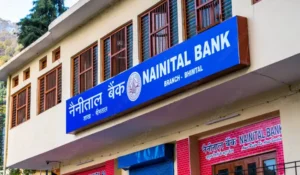Eight friends A, B, C, D, E, F, G and H are sitting in a straight line facing north. Each of them likes a different colour, viz Red, Blue, White, Brown, Pink, Violet, Yellow and Orange, but not necessarily in the same order.
The one who likes Orange colour sits third to the right of G. C is on the immediate left of G. The person who likes Whitecolour sits second to the left of C. B sits second to the right of H, who like neither Orangecolour nor Whitecolour. Only two persons sit between C and the one who likes Pinkcolour. A and F are immediate neighbours and both of them do not like Orangecolour. The person who likes Redcolour sits second to the right of A. There are two person between D and the one who likes Bluecolour. D does not like Orangecolour. The one who likes Violetcolour is an immediate neighbour of the one who likes Orangecolour. The one who likes Pinkcolour sits second to the left of A. One of the immediate neighbours of G likes Yellowcolour. D sits on an extreme end of the line.
Q1. Who among the following likes Browncolour?
(a) A
(b) H
(c) B
(d) D
(e) None of these
Q2. Who among the following sits on the immediate left of F?
(a) C
(b) A
(c) D
(d) E
(e) None of these
Q3. C likes which of the following colours?
(a) Blue
(b) Red
(c) Violet
(d) Brown
(e) None of these
Q4. How many persons are there between A and H?
(a) Three
(b) Two
(c) None
(d) Four
(e) None of these
Q5. What is the position of B with respect to the one who likes Yellowcolour?
(a) Second to the left
(b) Second to the right
(c) Third to the right
(d) Fourth to the left
(e) None of these
Directions (6-7): In the questions below are given some conclusions followed by five set of statements. You have to choose the correct set of statements that logically satisfies given conclusions either definitely or possibly. Assume the given statements to be true even if they seem to be at variance from commonly known facts.
Q6. Conclusions: Some musicis not songs. No Car is songs.
Statements:
(a) Some musicare fax. No fax is songs. No songs isBoy. All boy are car..
(b) All the Carare boy. Somesongs are boy. Some musicare fax. No fax is songs.
(c) No fax is songs. No songs isCar. All theCar are boy. No music is boy.
(d) Some musicare fax. No fax is songs. All car are boys. No boys issongs.
(e) None of these.
Q7. Conclusions: Some mouse aremonkey. Some monkey are pig.
Statements:
(a) All mouse are monkey. Some monkey is cow. No cow is pig. Some pig is bear.
(b) Some mouseare bear. Some bear is monkey. Some monkey is cow. Some cow is pig.
(c) Some bear is mouse. All bear is monkey. All mouse is pig. Some pig is cow.
(d) All monkey is mouse. somemouse is bear. Some bear is pig. Some pig is cow.
(e) None of these.
Directions (8-10): Question consists of five statements followed by five conclusions. Consider the given statements to be true even if they seem to be at variance with commonly known facts. Read all the conclusions and then decide which of the given conclusions does not logically follow from the given statements using all statements together.
Q8. Statements: Some pen is book. No book is copy. All copy is notebook. Some notebook is desk. All desk is bench.
Conclusions: (a)Some pen is not copy.
(b) Some notebook is not book.
(c) Some notebook is bench.
(d) Some bench is copy.
(e) None of these.
Q9. Statements: All bus is truck. Some bus is train. No train is car. Some car is taxi. All taxi is bicycle.
Conclusions: (a) Some bus is not car.
(b) Some truck is not car.
(c) Some bicycle is car.
(d) Some truck is not train.
(e) None of these.
Q10. Statements: Some chair is car. All car is seat. No car is cart. Some cart is bull. All bull is animal.
Conclusions: (a)Some chair is seat.
(b) Some chair is not cart.
(c) Some seat is not cart.
(d) Some animal is not cart.
(e) Some animal is cart.
Directions (11-12): In each question below is given a statement followed by two courses of action numbered I and II. On the basis of the information given in the statement, you have to assume everything in the statement to be true, then decide which of the suggested courses of action logically follow(s) for pursuing.
Given answer:
(a) if only I follows.
(b) if only II follows.
(c) if either I or II follows.
(d) if neither I nor II follows.
(e) if both I and II follow.
Q11. Statement: An increased number of credit/debit card forgery cases have been recorded recently.
Courses of action:
I. The banks should make stricter verification to ensure the access to credit/debit card by the authorised person
II. The banks should advise their customers to be more careful in dealing with plastic money.
Q12. Statement: There has been a spurt of robbery and house-breaking incidents in one locality during the past fortnight.
Courses of action:
I. The local police station personnel should start patrolling the locality at regular intervals.
II. The residents in the locality should be asked by the police authority not to leave their houses during the night.
Directions (13-15): Below in each question are given two statements I and II. These statements may be either independent causes or may be effects of independent causes. One of these statements may be the effect of the other statement. Read both the statements and decide which of the following answer choices correctly depicts the relationship between these two statements.
Marks answer:
(a) if statement I is the cause and statement II is the effect.
(b) if statement II is the cause and statement I is its effect.
(c) if both the statements I and II are independent causes.
(d) if both the statements I and II are effects of independent causes.
(e) if both the statements are effects of some common cause.
Q13. I. Government has tightened security checks at all important places and also at various public places.
II. Incidences of terrorist attacks are increasing day by day.
Q14. I. India has surpassed the value of tea exports this year over all the earlier years due to an increase in demand for quality tea in the European market.
II. There is an increase in demand of coffee in the domestic market during the last two years.
Q15. I. The local cooperative credit society has decided to stop giving loans to farmers with immediate effect.
II. A large number of credit society members have withdrawn major part of their deposits from credit society.


_2017.png)

 Profit, Loss & Discount – Concept + ...
Profit, Loss & Discount – Concept + ...
 Nainital Bank Recruitment 2025-26 Notifi...
Nainital Bank Recruitment 2025-26 Notifi...
 Daily Current Affairs Quiz 13 December 2...
Daily Current Affairs Quiz 13 December 2...








